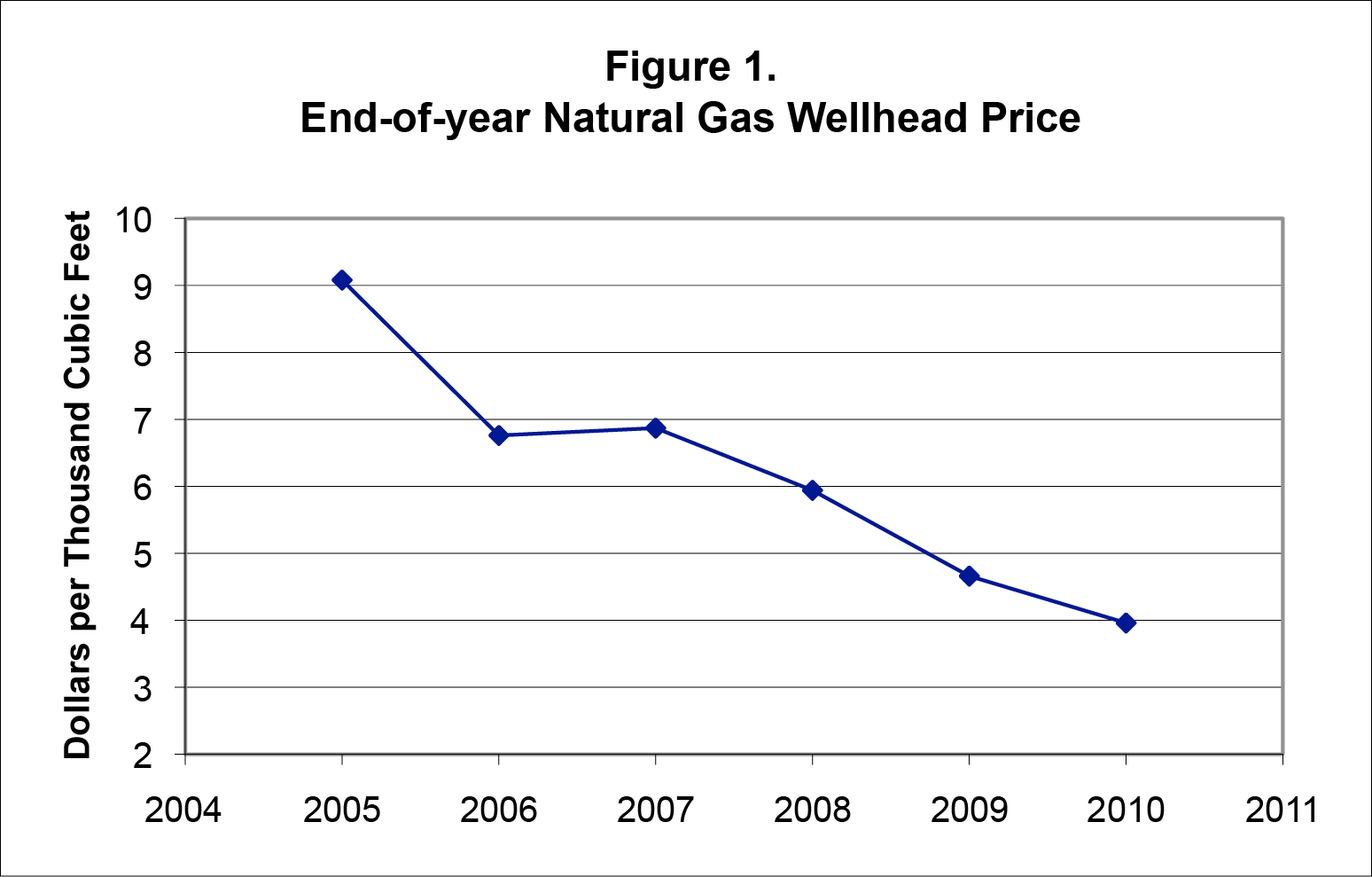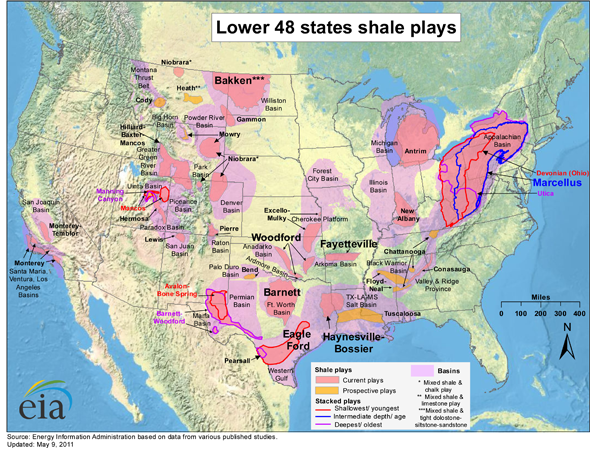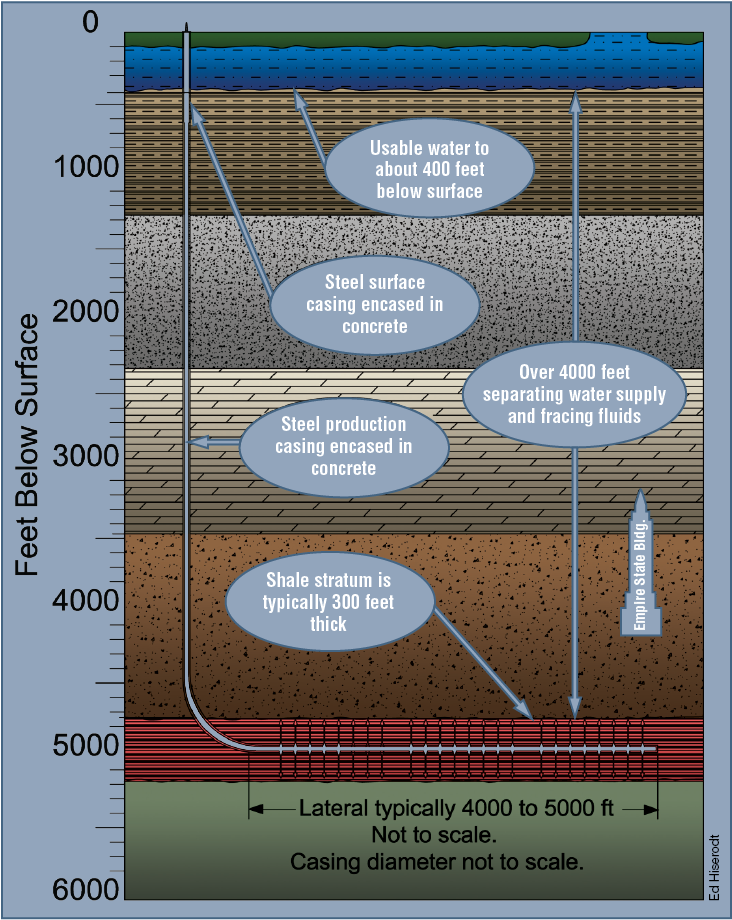“The oil and natural gas we rely on for 75 percent of our energy are running out,” warned the President in a televised speech on energy policy. And because we are running out, “we must prepare quickly” for a transition “to strict conservation and to the use of coal and permanent renewable energy sources, like solar power.”
Of course, the President who said this was not Barack Obama. (Could you imagine Obama calling for a transition to coal?) The President was Jimmy Carter — on April 18, 1977. In the same speech, Carter also said that “in spite of increased effort, domestic production has been dropping steadily at about six percent a year.” Regarding oil in particular, he warned that if consumption continued to rise at the same five percent annual rate it had in the past, “we could use up all the proven reserves of oil in the entire world by the end of the next decade” — that is, by the end of the 1980s.
Not only have we not run out of either oil or natural gas, but in the case of natural gas, America’s “proved reserves” have actually risen significantly since 1977. According to the Energy Information Administration (EIA, a part of the U.S. Department of Energy), the United States possessed 207 trillion cubic feet of (dry) natural gas in 1977, as compared to 272 trillion cubic feet in 2009. How could the nation’s proved reserves go up instead of down, despite all of the natural gas that has been consumed since 1977?
Part of the answer is the discovery of new fields. But another part of the answer is changing economic and technological conditions that have made it profitable and practical to recover natural gas that otherwise would have been left in the ground.
The “proved reserves” figures reported by the Energy Information Agency are a relatively small part of America’s natural-gas resource base, which has increased dramatically in recent years. On April 27 of this year, the nonprofit Potential Gas Committee, which is comprised of a group of experts in the field, estimated the U.S. future gas supply at 2,170 trillion cubic feet — enough natural gas to satisfy America’s consumption for 100 years, and a huge 42 percent increase over the committee’s assessment just four years earlier. Dr. John B. Curtis, the Potential Gas Committee’s spokesman as well as professor of geology and geological engineering at the Colorado School of Mines, noted that the assessment “reaffirms the Committee’s conviction that abundant, recoverable natural gas resources exist within our borders … and in all types of reservoirs — from conventional, ‘tight’ and shales, to coals.”
Shale-gas resources, in particular, have skyrocketed and are now being tapped commercially. This emerging natural-gas gale is being powered by rapidly developing technologies of drilling and methods to convert the underground resources into economic and efficient forms of fuel. It is impossible to predict a limit to this energy boon, which is now just several years in the making.
The technological breakthrough sparking this energy revolution is the combination of horizontal drilling and hydraulic fracturing known as “fracing” (pronounced FR?K-ing). Born in the Barnett Shale of North Central Texas in 2003, it has spread across the United States and is now the norm in most natural gas-producing areas of the world. It is used to force large amounts of methane — 85 percent of what is referred to generally as natural gas — out of tight shale formations that were hitherto considered economically unviable.
Columnist James Delingpole of the London Daily Telegraph describes the potential of this innovation:
Imagine if we were to discover a new form of cheap, clean energy so abundant that it will provide our needs at least for the next two centuries, freeing us from the pervasive early 21st century neurosis of having to worry about “peak oil” or “conserving scarce resources,” causing a worldwide economic boom and with the added side-benefit of creating more fertiliser so that we can not only heat our homes more cheaply than ever before but also eat more cheaply than ever before. Imagine how Environmentalists would react if such a miracle came into being. Actually we don’t need to imagine, for the miracle is already here. It’s called Shale Gas.
It is important to point out that the focus of this article is shale gas, which is only one of many sources of natural gas. The list also includes wet and dry natural gas, coal bed methane, and methyl hydrates. Until a few years ago, shale was under the radar and considered an unconventional resource. Today, the U.S. Energy Information Administration reports, “U.S. shale gas production more than tripled between 2007 and 2010, and its share of total domestic natural gas consumption increased from about 5 percent to over 20 percent” during the same period. While only one percent of production in 2000, shale gas is projected to make up 50 percent of all natural gas production by 2020.
The Versatility of Natural Gas
We are accustomed to the use of natural gas for residential and commercial heating, but more than 20 percent of our electricity is also generated by this fuel. Its use has several advantages, including a very low pollutant level and the ability to be delivered efficiently by pipeline. It can also be utilized in jet engine-type generators capable of supplying electricity almost instantly.
When the jet turbine generator is used, exhaust gases can be recovered to operate a thermal generator in a system known as combined cycle power plant (CCP) with an efficiency of about 55 percent, some 20 percent greater than a standard thermal plant. And for those who still have a concern about carbon dioxide emissions, a CCP produces 0.8 pounds of CO2 per kilowatt hour (kWh) of electricity, compared to 2.0 pounds for a new coal-fired plant. Abundant natural gas is very good news for efficient electrical generation.
Shale gas is also promising in the crucial question of “energy independence.” According to the EIA, “U.S. net imports of natural gas have fallen for three consecutive years, due largely to growing domestic production from shale gas formations.” During the same time, domestic consumption continued its steady rise as prices kept on their downward slide.
Until recently the outlook for widespread use of natural gas to fuel vehicles made it a weak contender in the struggle for national independence from foreign oil sources. Due to its low energy density, pressurized tanks capable of holding 3,000 psi (100 times your tire pressure) are necessary to store CNG. This is no problem for forklifts and limited-range vehicles like city buses. But it costs about $6,000 to convert a gasoline automobile to CNG, and only one manufacturer offers a CNG-ready automobile. Utah is attempting to solve the problem by a tax credit of up to $2,500 for converting to or buying CNG vehicles, while building state-owned CNG service stations. H.R. 1380, known as the NAT GAS Act, proposes to do a similar thing nationally. While once having over 180 predominantly Democratic cosponsors, several Republicans have bailed. Subsidized CNG is thankfully being viewed in light of the burgeoning national debt.
Liquefied Natural Gas (LNG), reduced in volume by a factor of 600, is primarily used to facilitate shipment and has only found traction in very large vehicles having a platform for cryogenic storage.
Gas to Liquid
But times, they are achangin’. New research is making it possible to convert natural gas into transportation fuels. Known as the “gas to liquid” (GTL) process, this method converts methane into products such as 95-octane, diesel, and aviation fuels. Methane, the main component of natural gas, is composed of one carbon atom and four hydrogen atoms. GTL converts the small CH4 molecule into a long chain molecule like C8H18 (octane) in a very short time, the way geologists believe the same process is done by heat and pressure over eons.
The proprietary Shell Middle Distillate Synthesis (SMDS) process has already been proven on a commercial scale at a 14,700 barrel-per-day GTL plant in Malaysia. It is the model for the world’s largest GTL plant, now in its last stages of construction, known as Pearl GTL, where 260,000 barrels of oil-equivalent products are to be produced each day. At its construction peak, the $19 billion plant employed 52,000 workers.
Dallas-based Synfuels claims it has an even cleaner and cheaper process than SMDS. Natural gas is “cracked” into acetylene (C2H2), followed by a catalytic proc-ess that converts 98 percent of the acetylene into ethylene (C2H4), which is then easily converted into gasoline, diesel, and jet fuel. Their process is dubbed ECLAIRS for Ethylene from Concentrated Liquid-phase Acetylene — Integrated, Rapid and Safe. Synfuels now has a fully operational demonstration plant in Bryan, Texas, for the production of 95-octane fuel.
Other major players in GTL development include Exxon (U.S.), Sasol (South Africa), Syntroleum (Tulsa, Okla.), Rentech (Los Angeles, Calif.), GeoGas (Santa Fe, N.M.), and Intevep (Venezuela).
So why haven’t you heard about any of these or similar processes to convert natural gas into fuels? Does it seem strange that government is big on subsidizing wind and solar projects that have no bearing on “energy independence?” Why are there billions in government subsidies for grossly inefficient production methods of ethanol and bio-diesel that usually consume more petroleum products than they replace?
The Naysayers
There are three groups that wish to stifle this energy revolution. First are the competitors in the age-old clash that buggy whip manufacturers faced with the coming of the horseless carriage. Existing gas suppliers don’t exactly relish lower cost gas entering into their markets. Neither do coal suppliers, who understand the advantages of natural gas. Gas is delivered by pipeline, not unit trains with one hundred tons of coal per car making up one day’s supply for a coal-powered electric plant. Though the public wants clean-burning natural gas (without the ash and other combustion products inherent in burning coal), existing suppliers are not going to give up without a fight.
 Equally unnerving to competitors is the fact that the fracing process is making it possible for gas prices to drop even as demand reaches all-time highs. The graph on the left shows how wellhead prices have dropped steeply since the fracing process was instituted for shale plays. The Gas Technology Institute reports that demand for natural gas in 2010 was 22.1 trillion cubic feet — 10 percent higher than the previous mark set in 2000. (Remember, prices are supposed to rise when the demand increases.) Additionally, a number of older coal plants across the country are to be retired soon, with natural gas poised to be competitive not only in construction costs but also in fuel expenses.
Equally unnerving to competitors is the fact that the fracing process is making it possible for gas prices to drop even as demand reaches all-time highs. The graph on the left shows how wellhead prices have dropped steeply since the fracing process was instituted for shale plays. The Gas Technology Institute reports that demand for natural gas in 2010 was 22.1 trillion cubic feet — 10 percent higher than the previous mark set in 2000. (Remember, prices are supposed to rise when the demand increases.) Additionally, a number of older coal plants across the country are to be retired soon, with natural gas poised to be competitive not only in construction costs but also in fuel expenses.
The second group antagonistic to shale gas is an odd breed that has no desire to see the human condition improved but would prefer it to revert to earlier times when human and animal labor were the norm, not just fun at the dude ranch. They want fewer humans on the Earth since they consider mankind (except for themselves) as interlopers on a planet that should have only those creatures in the numbers that they see fit.
They call themselves environmentalists. We are not referring to families that recycle their trash or to Prius owners. We’re referring to those such as Malthusian Paul Ehrlich, who believes, “Giving society cheap, abundant energy would be the equivalent of giving an idiot child a machine gun.” Ehrlich’s name may ring a bell, since he was involved in one of the most famous economic wagers in history. In 1980, he bet economist Julian Simon that the price of five commodities — chosen by Ehrlich and his advisor, John Hol-dren — would rise between 1980 and 1990 because the world was rapidly running out of resources. All five fell in price, and two of them dropped by more than 50 percent. Unfortunately, Ehrlich’s collaborator John Holdren is now Director of the White House Office of Science and Technology Policy, and his recent pronouncements would suggest he is still in step with his former comrade.
The third group may appear to be reactive, yet understands well H.L. Mencken’s admonition: “The whole aim of practical politics is to keep the populace alarmed (and hence clamorous to be led to safety) by menacing it with an endless series of hobgoblins, all of them imaginary.” The politicos complete the circle. The power elites finance and encourage a supposedly grass-roots movement (e.g., the environmental lobby) that creates the appearance of popular support for their agenda and encourages the politicians to lead us to safety by passing laws the power elites want enacted.
Stifling New York Shale
 This map of the shale plays (or fields), shows that the largest in the United States is the Marcellus Play that extends from New England to Tennessee, with a large part of it in the state of New York. Yet New York is the only state with significant resources not participating in the shale gale. TNA asked Bob Williams of Barnes-Williams Environmental Services (www.barneswilliamsenvironmental.com) his opinion of why this is happening. Williams, who has served on the expert panel of the 2010 Natural Gas Development Summit Meetings of the Joint Landowners Coalition of New York (JLCNY), replied:
This map of the shale plays (or fields), shows that the largest in the United States is the Marcellus Play that extends from New England to Tennessee, with a large part of it in the state of New York. Yet New York is the only state with significant resources not participating in the shale gale. TNA asked Bob Williams of Barnes-Williams Environmental Services (www.barneswilliamsenvironmental.com) his opinion of why this is happening. Williams, who has served on the expert panel of the 2010 Natural Gas Development Summit Meetings of the Joint Landowners Coalition of New York (JLCNY), replied:
Environmental extremists and wealthy foundations have succeeded in duping New York State politicians to delay development of the natural-gas industry. In total disregard for the abysmal fiscal condition of the state and continuing exodus of jobs, state lawmakers and their minions persist in throwing away tens of millions of dollars in tax revenues and thousands of high-paying jobs associated with the natural-gas industry. This unnecessary delay has stalled gas companies from committing physical and financial resources to New York State at tremendous cost to citizens, communities, schools, and charitable organizations. In addition, they are preventing landowners from harvesting the gas from beneath the lands they own and on which they pay millions of dollars in real estate taxes annually. And the delays continue with no end in sight.
TNA also had the opportunity to interview Nick Schoonover, president of the Tioga County Landowners Group. Schoonover, formerly the IBM program manager and technical director on the guidance computer for the Saturn V and chief engineer on the AWACS computer that is still in use for the U.S. airborne warning and controls system aircraft, finally met his match when attempting to deal with the New York state legislature. How does one deal with irrationality and insanity?
Asked who is behind the delays, Schoonover believes that the NYC wealthy want a pristine playground, and drilling would be a NIMBY (“Not In My Backyard!”) problem for them. He also points out that 84 percent of the legislature is from the city and couldn’t care less about yokel landowners in the outback.
What is the excuse for politicians to continue the delays? To lead the populace to safety, of course. But what is the rationale?
Last year, filmmaker Josh Fox released a documentary entitled GasLand, a blatant propaganda piece that purportedly exposes the evils of fracing. It contains video showing methane-entrained water from a kitchen faucet flaming in the sink. It was a complete hoax because there was no fracing or drilling anywhere near the flaming faucet. Ignored is the fact that shale formations are generally found 5,000 to 10,000 feet below the surface, with potable aquifers seldom deeper than 400 feet. (Methane in well water is not unusual when near-surface domes, known as “sand lenses” push gas upward into an aquifer. The flammable gas is unnoticed in the water because it is colorless, odorless, and tasteless, and is not considered a health concern.)
 Another hobgoblin used by the anti-fracing mob is that naturally occurring radioactive material (NORM) is brought up from drill cuttings, sent through treatment plants, discharged into rivers, and then supposedly contaminates downstream water supplies. This argument, however, didn’t hold water, as numerous studies have proven. For example, researcher Matt Ridley explained in his 2011 paper The Shale Gas Shock, “The Pennsylvania Department of Environmental Protection has tested the water in seven rivers to which treated waste water from gas wells is discharged and found not only no elevation in radioactivity but: ‘All samples were at or below background levels of radioactivity; and all samples showed levels below the federal drinking water standard for Radium 226 and 228.’”
Another hobgoblin used by the anti-fracing mob is that naturally occurring radioactive material (NORM) is brought up from drill cuttings, sent through treatment plants, discharged into rivers, and then supposedly contaminates downstream water supplies. This argument, however, didn’t hold water, as numerous studies have proven. For example, researcher Matt Ridley explained in his 2011 paper The Shale Gas Shock, “The Pennsylvania Department of Environmental Protection has tested the water in seven rivers to which treated waste water from gas wells is discharged and found not only no elevation in radioactivity but: ‘All samples were at or below background levels of radioactivity; and all samples showed levels below the federal drinking water standard for Radium 226 and 228.’”
The biggest card environmentalists play is fear that fracing fluid will contaminate the water supply. There are two parts of this accusation to consider. First is the fact that fracing occurs some 4,000 feet below the lowest aquifer, leaving almost a mile of solid rock between the two, and the equipment’s concrete-enclosed steel casing is pressure tested to 9,000 psi to ensure no leakage into or out of the well.
Second is the composition of the fracing fluid. Unlike natural aquifers that often contain significant amounts of such toxic minerals as arsenic and bromine, fracing fluid is more than 99.5 percent water and sand. Each energy company uses its own additives to the water and sand mixture. Much is being made that these are secret (and therefore harmful) chemicals. Indeed, the drilling companies do have their “formulas” for the best mix of chemical additives for particular sites, but the additives themselves are not secret. For example, they can be found on the website www.energyindepth.com or in Chesapeake’s May 2009 “Hydraulic Fracturing” fact sheet. By far the most egregious of these chemicals is the 0.123 percent additive of hydrochloric acid. This converts the normally placid fracing fluid into a raging acid bath with a pH between that of Coca-Cola and apple juice.
The experts agree. Not a single case of groundwater contamination from hydrofracing has emerged in a decade of studies by groups like the Ground Water Protection Council, the Interstate Oil and Gas Compact Commission, the Ground Water Protection Council, the Joint Landowners Coalition of New York, and the U.S. Environmental Protection Agency.
Yet Schoonover noted when fracing came before the New York Assembly, politicians turned it into a PR event, having their pictures taken with celebrities and showing Josh Fox’s propaganda piece GasLand. Schoonover saw professional banners, posters, and busloads of protesters, indicating a well-funded, well-orchestrated event that overwhelmed citizens who were looking for a redress of well-founded grievances. “Why,” he asked, “were they so passionate about stopping this?”
His question is perhaps best answered by columnist Christopher Booker, reporting for the U.K.’s Daily Telegraph. He opines that environmentalists “hate [shale gas] to the point of hysteria because it offers the prospect of a cheap and abundant fossil-fuel that could keep industrial civilization going for hundreds of years, and is also, according to their prejudices, environmentally friendly, because its CO2 emissions are much less than those of coal or oil.”
What Will the Future Hold?
Will erroneous prejudices and malicious intent bring this bonanza to a jolting halt, leaving us with a great demand for natural gas and a sudden end to supply? The realization of enormous benefits of shale gas is fueling rapid advances in technology, promising a bright future — as long as our industriousness and entrepreneurial spirit are not stifled by the heavy hand of government. Our “crisis” is not a lack of energy but the lack of access to energy due to constraints imposed by environmental activists influentially insinuated in federal and state governments.
Related article:




